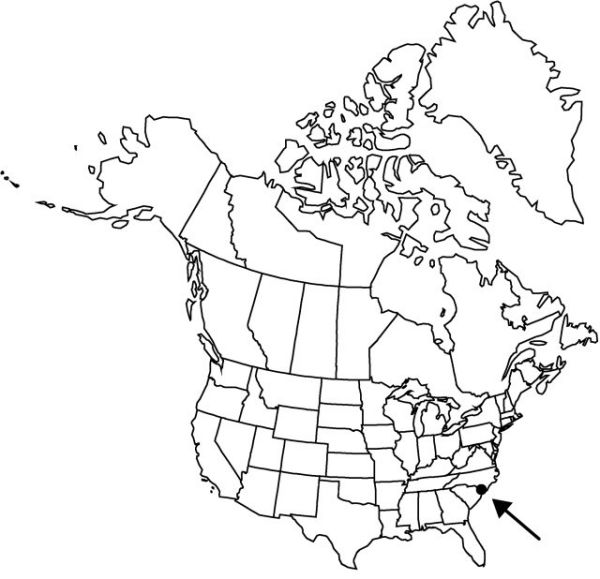Difference between revisions of "Hymenocallis pygmaea"
Pl. Life 18: 70. 1962.
FNA>Volume Importer |
FNA>Volume Importer |
(No difference)
| |
Revision as of 19:32, 24 September 2019
Bulb rhizomatous, narrowly ovoid, 1.3–3 × 1–2 cm; basal plate ca. 1 cm; neck 2–5 cm; tunic gray. Leaves deciduous, 2–5, suberect, 1.5–4 dm × 0.5–1.3(–2) cm, coriaceous; blade shiny green, narrowly liguliform, apex subacute. Scape 1.2–3(–4.2) dm, 2-edged, glaucous; scape bracts 2, enclosing buds, 2–3 × 0.5–1 cm; subtending floral bracts 1.5–2.5 cm × 3–5 mm. Flowers 1–2, opening sequentially, with lemony fragrance; perianth tube green, 4–6 cm; tepals slightly ascending, white, tinged green on keel, 5–7 cm × 3–6 mm; corona white with small green eye, funnelform at full anthesis, then gradually spreading, shortly tubulose proximally, 2–3 × ca. 3 cm, margins between free portions of filaments irregularly dentate, projections small; free portions of filaments inserted on flat sinal base, suberect, white, 1.8–2.8 cm; anthers 1–1.5 cm, pollen golden; ovary ovoid, ca. 1 cm × 5 mm, ovules 2 per locule; style green in distal 1/3, fading to white proximally, 10–13 cm. Capsules subglobose, ca. 2 × 2 cm. Seeds obovoid, ca. 1.5 × 1 cm. 2n = 40, 41.
Phenology: Flowering mid spring.
Habitat: Bogs and stream banks
Elevation: 0 m
Discussion
Hymenocallis pygmaea was described from bulbs collected by Mary G. Henry along a small tributary of the Waccamaw River in South Carolina. Populations that we have studied and vouchered from the Waccamaw River drainage are characterized by extremely narrow, coriaceous, nearly erect, shiny leaves and small flowers. This species could be considered a cytological and/or ecological variant of H. crassifolia, but because of its smaller stature and features it is maintained here as a separate species. Additional studies on the dwarf spider-lilies of the Atlantic Coastal Plain should be undertaken to clarify their taxonomic status.
Selected References
None.
